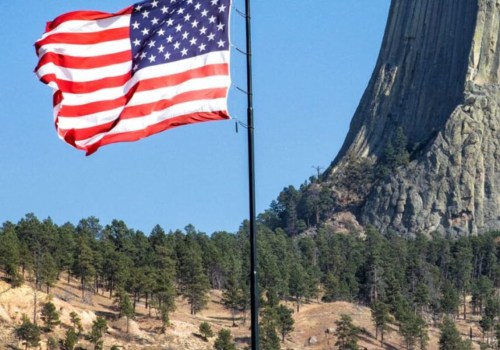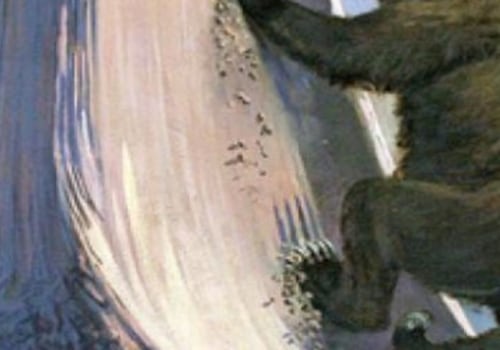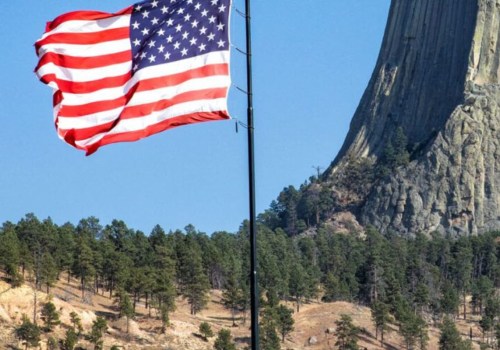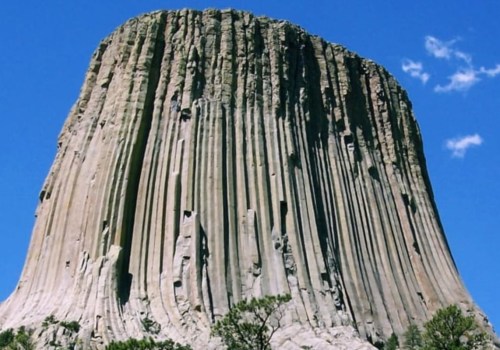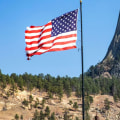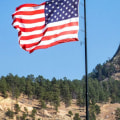The majestic Devils Tower in Wyoming has been a source of wonder and admiration for centuries. It is an iconic rock formation that has religious and cultural importance to many Native American tribes. But how did this majestic monolith get its name? The name Devil's Tower originated in 1875 during an expedition led by Colonel Richard Irving Dodge. According to the National Park Service, the interpreter of the expedition misinterpreted a native name to refer to the Tower of the Evil God.
This mistranslation was later abbreviated to Devils Tower. In 1906, when the formation became the first in the country to be designated a national monument, its name was based on this mistranslation. In recent years, spiritual leaders of the Sioux and more than a dozen Native American tribes have asked U. S.
officials to change the name of Devils Tower. Chief Arvol Looking Horse has requested that it be changed to Bear Lodge, which is the title of a nearby national forest. Wyoming politicians have opposed this request and last week, the state congressional delegation introduced a bill that would block a name change. Tourism officials say Devils Tower matters to Wyoming brand campaigns. The panel overseeing place names had planned to consider Looking Horse's request next year, but that is on hold while federal legislation banning a name change is pending. Chief Looking Horse said he expects President Barack Obama to issue an executive order renaming the tower in Wyoming, restoring dignity and honor to an area that tribes consider a sacred place of power.
Devils Tower received its popular English name in 1875, when Colonel Richard Irving Dodge directed geologist Walter P. Reuter. An interpreter with the expedition told him that the term meant “Tower of the Evil God”, later abbreviated to Devils Tower. Devils Tower is composed of a rock called phonolite porphyry, which is like a less shiny granite since it does not contain quartz. Some claim that Devils Tower is an old volcano, but geologists say it's likely an igneous intrusion, meaning it formed underground from molten rock or magma that was pushed into sedimentary rock and became solid. For the Indian tribes of the Northern Plains, Devils Tower isn't just an impressive landmark, it's a sacred place.
Different tribes have different stories about how it got its name. For example, the Arapahoe call Devils Tower “Bear's Tipi”; the Kiowa refer to it as Aloft on a Rock or Tree Rock; and the Lakota call it Bear Lodge, Bear Lodge Butte, Grizzly Bear's Lodge, Mythic-Owl Mountain, Grey Horn Butte and Ghost Mountain. Although parts of the story change throughout different tribes of the region, each includes the presence of a giant bear or a group of bears to justify the vertical cracks along the surface of Devils Tower. For example, one legend tells of seven sisters who were chased by a giant bear and climbed up on top of Devils Tower for safety.
Visitors can also see the star formation of the Big Dipper just above Devils Tower in the night sky, along with many other important star clusters and constellations referenced by area's Native American culture. Devils Tower is popular with rock climbing enthusiasts who rely on its numerous parallel cracks to reach the top. However, if you choose to explore make sure to mark it on your map - Devils Tower is a must-visit destination for any Rapid City area vacation. Devils Tower continues to be a destination that inspires wonder and admiration for the power and beauty of nature and time across cultures and generations.
